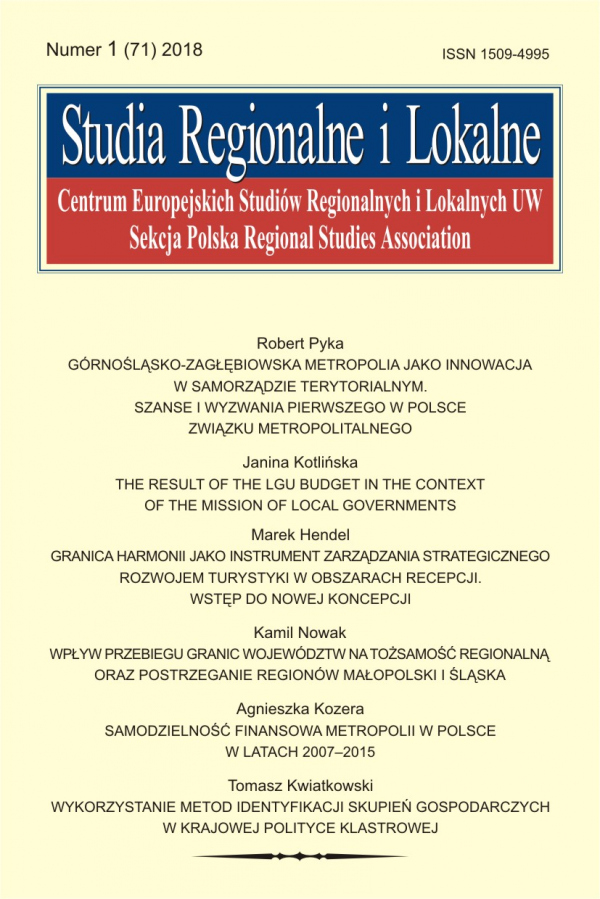Issue:
1(71)/2018
Tomasz Kwiatkowski
Industrial cluster identification methods in the political practice in Poland
DOI: 10.7366/1509499517106
Wykorzystanie metod identyfikacji skupień gospodarczych w krajowej polityce klastrowej
W artykule przeanalizowano, w jakim stopniu naukowe rozumienie skupień gospodarczych (klastrów) i metody ich identyfikacji znajdują odniesienie w krajowej polityce klastrowej i na jakich konkretnych ujęciach i wyborach się ona zasadza. Omówiono założenia współczesnej polityki klastrowej w Polsce, a następnie zreferowano osiem ugruntowanych metod identyfikacji gron. Posługując się czterostopniową skalą, określono stopień zgodności pomiędzy siedemnastoma kryteriami stosowanymi do wyłaniania krajowych klastrów kluczowych i metodami identyfikacji. Doszukano się nikłych powiązań w kryteriach: „masy krytycznej”, na które składa się liczba członków klastra i ich struktura, „koncentracji”, wyrażonym udziałem podmiotów w określonej odległości od koordynatora, i „potencjału gospodarczego” opartym na wielkości zatrudnienia i wartości sprzedaży.
Industrial cluster identification methods in the political practice in Poland
The article discusses the extent to which the national (Polish) cluster-based policy reflects scientifically-based industrial cluster identification methods as well as policy selection criteria. The framework of the current Polish cluster-based policy is discussed, followed by the presentation of eight well-grounded cluster identification methods. A four-level qualitative scale was used to determine the degree of compliance of 17 selection criteria with the identification methods. Only insignificant links were found in such criteria as “critical mass” (the number of the cluster members and the cluster structure), “concentration” (the number of the entities acting within some distance from their coordinator) and “economic cluster’s potential” (employment rate and sales values).
Affiliation:
Tomasz Kwiatkowski: Uniwersytet Jagielloński, Instytut Geografii i Gospodarki Przestrzennej, ul. Gronostajowa 7, 30–387, Kraków;
kwiatkowski@doctoral.uj.edu.pl 


